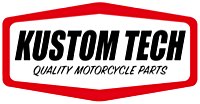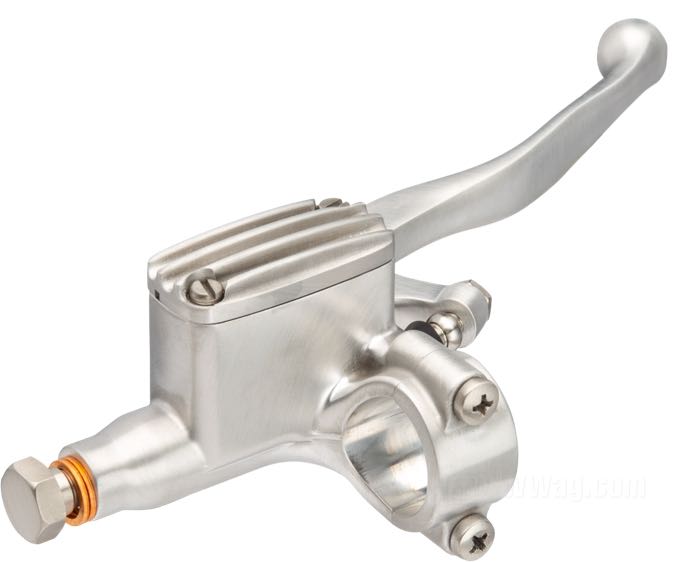Excellent braking power for 2 piston calipers and single discs or Cannonball hydraulic drum brakes for Springer forks.
These articles can be used with either DOT4 or DOT5 brake fluid. However, DOT4 and DOT5 must not mixed, due to being chemically not compatible. One should always stay with the same brake fluid type.
- aluminum forged
- hydraulic
- for handlebar Ø: 1 ”
- piston Ø: 12 mm
- required brake fluid: DOT 4 or 5
- thread: M10 x 1.0
- Italy

Brake Fluids
On your brake fluid bottles you will find notes like: "corresponds to DOT 3" or "specified according to DOT 5", or similar. These notes are important to us bikers. For basically, the biker should always refill what's already in his brakes. Don't mix! So why is that so?
There are two chemical bases you make brake fluids from. One is called glycolic ester. The other one is a silicone oil. Both are by no means compatible. If you mix brake fluid made from one base with its opponent made from the other base, you will get a highly aggressive mixture, that nibbles on your brake system's rubber gaskets and can coagulate to lumps that will eventually block your brake sytems. Not the stuff you will ever want to see in your bike ...
So, why are there two bases, and can't we agree on just one?
Brake fluids on a glycolic ester base are not compressible. That means they transfer pressure better. This is an important fact when you need a precise pressure point. E.g. on the race track or on a high power bike. On the other hand, these fluids are hygroscopic, that means they attract and incorporate water from the ambient air. This lowers the boiling point and you can experience problems under high brake stress, on the race track or when heading down passes in the Swiss Alps. Because of this you have to change this kind of brake fluid every two years. Glycolic ester based brake fluid is not nice to paint or plastic either. So don't spoil it on a refill. And choose only rep kits that can handle the stuff.
Silicone based brake fluid does not have these disadvantages. This is why it was invented in the 70es. Instead it is compressible to a certain degree, and you will have a less defined pressure point. So keep the stuff out of ABS systems. And, in some cases, water was found to literally deposite down in the brake calipers. Because water and silicone don't mix and silicone floats. And of course these brake systems also breathe the ambient air and take up water. The fluid just doesn't incorporate it. Therefore please change your silicone based brake fluid also regularly.
The glycolic ester based fluids are classified according to DOT 3, 4 and 5.1 . Silicone based brake fluids are only avilable as classified according to DOT 5. This is the point where confusion can start and lead the all too money-saving biker to risky action. So, once again, don't mix!
Harley used DOT 3 up to September 1976, after that they prescribed DOT 5. In the years 2005 - 2008 the factory returned to using DOT4, depending on models:
Touring 2005, Dyna 2006, Softail and V-Rods 2006, XL 2007, XR 2008.
Spare parts:
Accessories:

Have any questions?
Our service team will be glad to help out: Mondays - Thursdays 08:00-17:00 CET, Fridays 08:00-16:00 CET, Phone: +49 / 931 250 61 16, eMail: service@wwag.com















